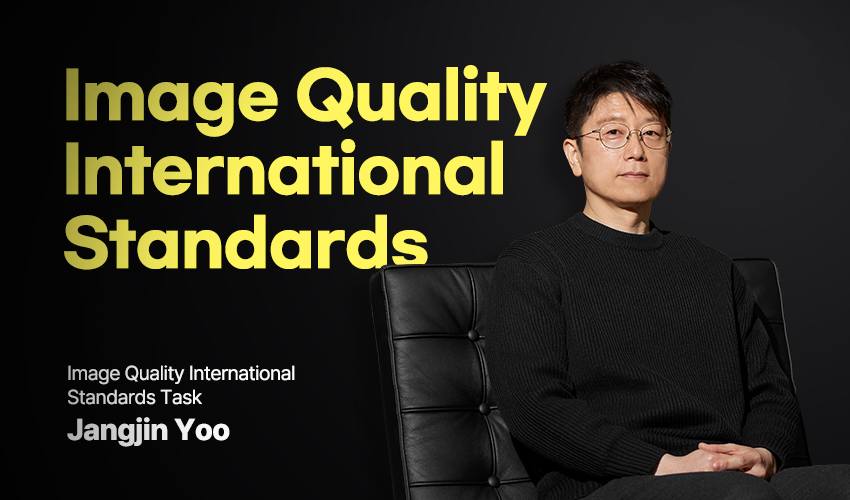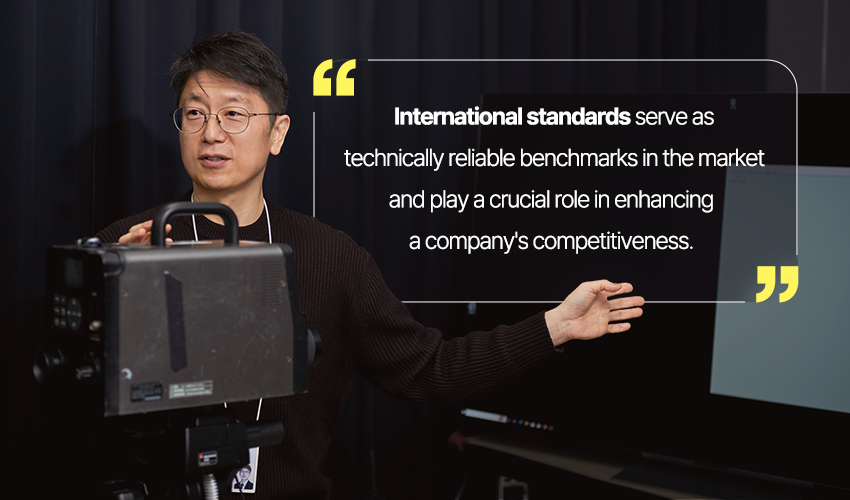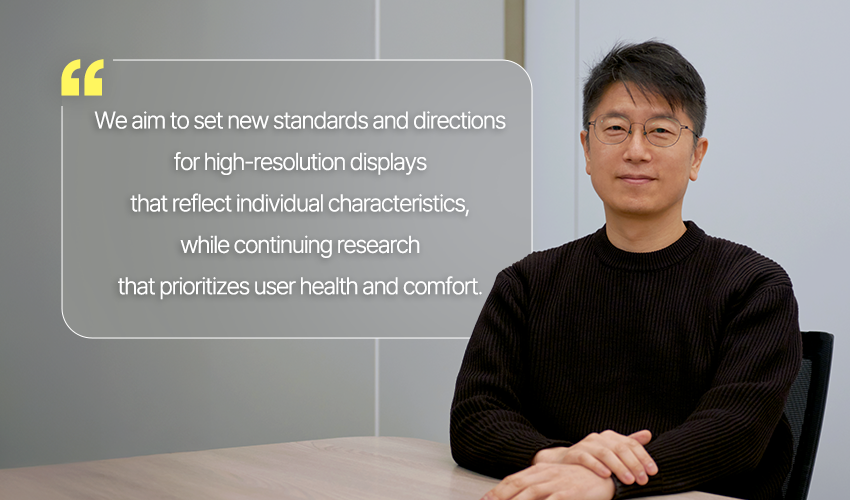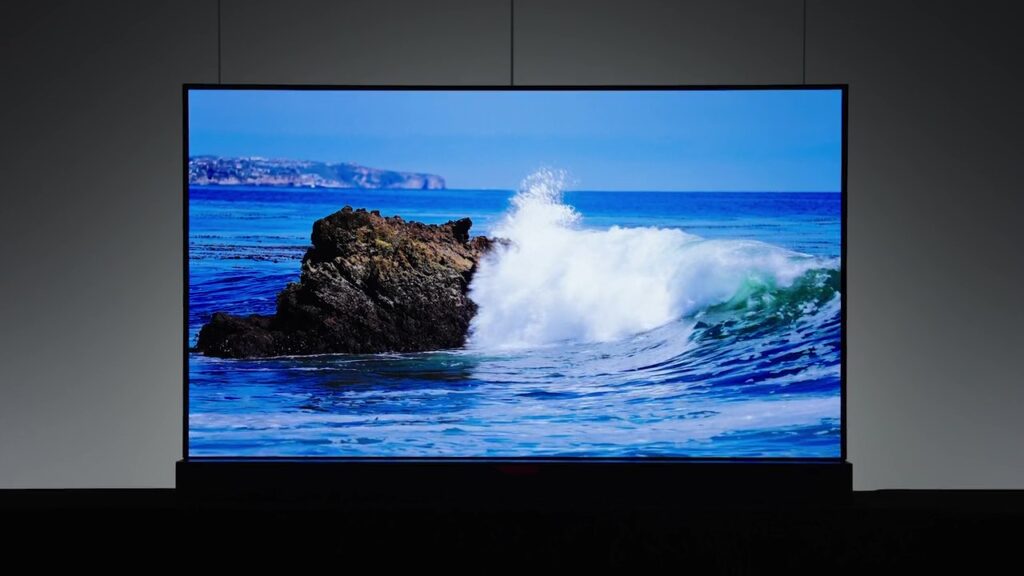
Who determines what makes a technology ‘good’? In a world where diverse products and new technologies are constantly being developed, the key to objectively proving quality lies in international standards.
As display technology advances, the concepts of ‘superior picture quality’ and ‘accurate color representation’ are evolving rapidly. To objectively define excellence in a universally understandable language and gain recognition in the global market, a solid international standard is essential. In line with this, LG Display is not only leading the development of OLED panels but also setting new benchmarks for the global display industry.
In this interview, we speak with Research Fellow Jangjin Yoo from the Image Quality International Standards Task, who led the development of the ‘Color Perception Difference Measurement Method’, recently recognized as an international standard. Join us as we explore how LG Display’s research and standardization efforts are shaping the global display market.
Measure of Reliability:
How the International Standard Showcases the True Value of Technology

Q. What does it mean to develop an international standard?
A. Researching international standards is the process of quantifying and objectively defining the value of a technology. Simply put, it means proving the technology using numbers and data. International standards, particularly those set by the International Electrotechnical Commission (IEC), are globally recognized agreements among countries and companies.
It typically takes about three to five years of rigorous discussions and validation before a technology is acknowledged as an international standard. Display experts from various countries present their research findings and data, engaging in logical debates and persuasive discussions. A technology that successfully passes this process is officially recognized as an international standard, gaining worldwide credibility.
Q. What are the benefits of a technology being recognized as an international standard?
A. A technology recognized as an international standard offers multiple advantages.
First, it provides a clear basis for demonstrating the excellence of the technology to both customers and consumers. For example, if LG Display’s OLED panels comply with international standards, it assures customers that the technology is reliable and trustworthy.
Second, an international standard serves as a widely accepted benchmark in the market, playing a crucial role in enhancing a company’s competitiveness. Companies that do not adhere to these standards risk falling behind in terms of technological credibility and market trust. On the other hand, technologies built upon international standards offer distinct value to customers and help companies establish a stronger foothold in the global market.
A New Standard for the Era of High-Quality Imaging:
The Color Perception Difference Measurement Method

Q. LG Display’s ‘Color Perception Difference Measurement Method,’ the first of its kind in the industry, has been adopted as an international standard. What is the significance and importance of this method?
A. ‘Color perception difference’ refers to the phenomenon where individuals perceive the same color differently due to variations in the sensitivity of their retinal cells. In other words, even when viewing the same display, people may perceive the color differently.
To address this issue, LG Display developed the industry’s first ‘Color Perception Difference Measurement Method.’ This method establishes a new standard for measuring how accurately and consistently a display can reproduce colors.
Through internal research using this method, LG Display has proven that its large OLED panels show significantly less variation in color perception across viewers compared to other technologies. The ‘Color Perception Difference Measurement Method’ works by quantifying the difference between the color measured by a machine and the color perceived by the human eye under natural lighting conditions, using seven standard colors. LG Display’s large OLED panels exhibited a color perception difference of only 10%, the lowest in the industry, while other displays showed up to a 30% difference.

The ‘Color Perception Difference Measurement Method’ was adopted as an international standard by the International Electrotechnical Commission (IEC), one of the three major global standardization bodies. Recognizing this achievement, LG Display was awarded the ‘IEC 1906 Award’ at the World Standards Day ceremony. This is not just the recognition of a single technology but symbolizes LG Display’s strengthened technological leadership in the global display market.

Q. Why did you start researching color perception differences?
A. It was to proactively respond to the needs of our customers. High-resolution displays, once primarily used by professionals like colorists and animators, are gradually becoming more mainstream. As a result, there has been a significant increase in demand from our customers for high-resolution panels that can deliver more accurate and consistent visuals.
Another major reason was the fact that individuals perceive colors differently, even when viewing the same display. This occurs due to variations in retinal sensitivity, leading to differences in color perception. In the high-resolution display era, this issue has become especially critical. For example, in fields where color accuracy and consistency are vital, such as healthcare, film, and design, these discrepancies can result in critical errors. Recognizing the importance of this problem early on, LG Display started researching color perception differences three years ago.
LG Display’s Innovative Journey:
Establishing Leadership Through the International Standard

Q. What position does LG Display hold in international standardization efforts?
A. In the early days, display standardization efforts were led by technologically advanced countries like Europe, the United States, and Japan. However, with OLED becoming the mainstream technology in the display market, South Korea, particularly LG Display, has now emerged as a leader in this field. LG Display is especially recognized as a global leader in OLED technology.
The international standards developed by LG Display, including the Color Perception Difference Measurement Method, OLED Image Quality Evaluation Method, OLED Dynamic Range Evaluation Method, and OLED Local Luminance Uniformity Evaluation Method, are essential for objectively assessing display performance. These standards also serve as prime examples of how LG Display has firmly established its leadership in the global display market.
Q. Could you share your future goals or vision?
A. As expectations for display quality continue to rise, the demand for personalized displays that cater to individual characteristics is also expected to increase. In particular, as the impact of displays on human biological rhythms, such as the nervous system and hormones, becomes an increasingly important consideration, we plan to continue researching and developing display technologies that not only prioritize superior image quality but also consider the user’s health and comfort.
Beyond the Screen:
The Future LG Display Envisions

Displays represent more than just screens—they embody countless hours of research, innovation, and a commitment to delivering customer value. LG Display continues to push the boundaries of technology while objectively demonstrating its value, solidifying its position as a trusted company in the global market.
As Research Fellow Jangjin Yoo mentioned, research into international standards is a powerful tool for recognizing differentiated customer value. LG Display will continue to lead the display industry with user-centric technology development and innovation, shaping a better tomorrow.








